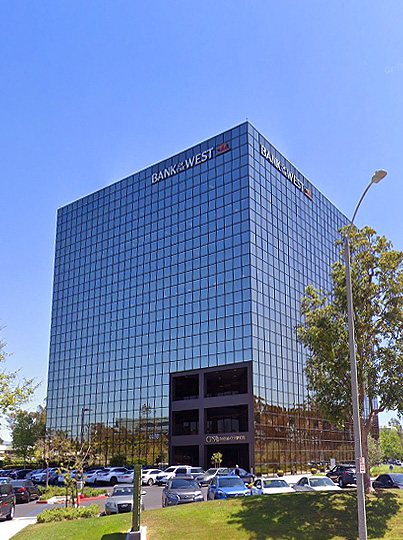Proving Fault In Slip And Fall Cases: A Guide For Orange County Residents

In California, a significant amount of legislation has been passed to reduce the incidence of accidents on business premises.
Despite this recent legal attention, slip and fall accidents remain one of the most common causes of injury and death outside of the home, making up 16% of all accidental deaths and leading to over a million visits to the E.R. every year.
Injuries resulting from slip-and-fall accidents are one of the leading causes of lost work days. If the injuries result in a lengthy recovery process, they can lead to significant wage losses and career advancement. If you’ve been impacted by a slip-and-fall accident, California laws around statutes of limitations make it essential to begin laying the groundwork for a premises liability claim as soon as possible.
Understanding the legal requirements and steps involved in proving liability is essential for California residents seeking legal action after an accident. This guide will provide an in-depth look at establishing fault in slip-and-fall cases, ensuring you receive the restitution you deserve after your accident.
Part 1: Establishing the Existence of a Defect Or Hazardous Condition
Identifying a Defect
To prove fault in a slip and fall case, it is necessary to establish a defect or hazardous condition in the property or area where the fall occurred. A defect can be any unsafe condition that poses a risk to individuals that the injured party couldn’t anticipate or avoid.
Hazards and defects can take many forms, including leaking machinery, spilled materials like sand or gravel, and poorly constructed or maintained walkways. These defects must meet certain conditions to be considered unsafe and help prove liability.
For example, you can imagine walking on a sidewalk in Orange County and tripping over a concrete slab that is significantly raised. If the raise is more than one inch, it is considered a hazardous defect. Documenting the exact measurements and taking photographs can provide clear evidence of the dangerous condition.
Documenting the Defect
Proper documentation of the defect is essential in proving fault in slip-and-fall cases. Take clear photographs of the area from different angles, measure the defect, and note the time and date of the incident. These photos should be taken as quickly as possible after the incident to ensure that the property owner does not fix the issue before action can be taken. This evidence will be crucial in proving the existence of the hazardous condition.
If you are unsure if the hazard that caused your accident meets the conditions necessary to prove liability, your next step is to consult a personal injury attorney. Personal injury lawyers like Allen Flatt Ballidis & Leslie (AFBL) will provide personalized consultations to answer any questions about your case. By working with AFBL, the task of documenting the hazard will fall to their team of professional investigators, who will provide all the evidence you need to prove fault down the line.
Part 2: Proving Notice of the Defect
For a property owner or manager to be held liable for a slip-and-fall accident, they must have noticed that the hazard existed before the event and either failed to fix the issue or provide reasonable notice. If the property manager was unaware of the problem, and it falls outside the bounds of constructive notice, they can’t be held liable for the resulting injuries.
For example, spills and leaks are common causes of slip-and-fall accidents, but they are also notoriously difficult cases for proving liability. Spills and leaks are often unavoidable and can happen randomly–meaning property owners cannot reasonably have prior knowledge of the hazard. A notable exception would be if the hazard had been detected through regular business activity, but hadn’t been otherwise known as constructive notice.
Constructive Notice
Constructive notice means the property owner should have known about the defect through regular inspections and maintenance. It requires proving that the defect existed for a sufficient amount of time that the owner should have discovered and remedied it.
Proving prior notice of the defect is often the most challenging aspect of a premises liability case. Highly trained professionals at a personal injury law firm can help establish proof that the property manager had ample time to rectify the issue or provide a proper warning.

Part 3: Steps to Take After a Slip and Fall Accident
Seek Medical Attention
Your health and safety are the top priority. Seek medical attention immediately after the accident to address any injuries and obtain medical records documenting your condition.
Report the Incident
Report the slip and fall accident to the property owner or manager. Ensure that an incident report is filed and request a copy for your records. There are strict reporting timelines for incidents, especially on city or government property, so this step should be taken as soon as possible.
Gather Evidence
Collect as much evidence as possible from the scene. This includes photographs, witness statements, and other relevant information supporting your case.
Consult a Personal Injury Attorney
A personal injury attorney is the best tool you have at your disposal after experiencing a slip-and-fall accident. Law firms like Allen, Flatt, Ballidis, and Leslie. Accessing this team of trained legal professionals who will gather evidence and actively manage your case, will allow you to focus on your recovery and achieve the best compensation for your injury.
Without proper legal representation, slip-and-fall accidents can cause significant disruptions in your income and in your quality of life. If you, or someone you know, are in an accident due to the negligence of others, contact our experienced injury attorneys at www.allenflatt.com/contact.html or call (949) 752-7474 for a free consultation.
Even if you aren't sure you have a case, give us a call at (888) 752-7474, or fill out our Free Case Review below.
We are here to help.
 RSS
RSS


